
Day Trip From Dubrovnik To Split Croatia
Embark on a day trip from Dubrovnik to Split, Croatia and experience the contrasting beauty of rolling green hills and dark rocky coastal terrain, modern bridges and quaint small towns. As major Game of Thrones fans visiting Dubrovnik in October 2022, we felt compelled to explore the UNESCO city of Split and learn about Diocletian's Palace.
Croatia's infrastructure has vastly improved with the newly built bridge that connects Dubrovnik to the main body of land, making the drive easier and quicker. Follow my guide to learn about each location, where to grab lunch, how to manage your time, and a sample itinerary to make the most of your day trip. For more information on the Roman turned modern city, check out my other article, A Brief History of Split Croatia.
This article has been updated in 2023 for the most accurate information on your adventure.

Driving to Split from Dubrovnik
Driving from Dubrovnik to Split is an absolute joy now with the new bridge that spans the waterways from Dubrovnik so you don't have to cross a border anymore. I would definitely still bring your passport though, just in case, and some cash to be able to pay the toll.
My friend Erin and I took a day trip with a viator tour, so the price of the toll was in the tour cost. It was really nice to have someone explain what the different landscape was, with the citrus valley of Croatia, the 'Wall of China' equivalent that snaked up the mountain, and how the Slavs, Hungarians and even Napoleon were thwarted in their attacks by the strategic castles, and stone walls. I highly suggest taking a tour, so you can ask LOADS of questions about Croatia lands, history and culture that was hidden to international visitors for so long behind the borders of the former Yugoslavia.

Arriving in Split On The Riva
The Split Riva is the long and wide pedestrian walkway that faces the sea and is lined with outdoor cafes. When the sun is shining, both locals and tourists flock to the waterfront promenade.
FIVE HOURS IN SPLIT ITINERARY
- Stroll the city’s waterfront promenade the Riva (where shops and boat tours leave)
- Enter Diocletian Palace through Bronze Gate (On Riva promenade)
- Enter the Diocletian Cellars (Palace’s substructures)
- Peristyle Square (where cathedral and baptistry are)
- St. Dominus Cathedral (former Mosoleum to Diocletian)
- The Baptistry (former Jupiters Temple)
- Vestibule (where Acapella singers are)
- Silver Gate – ‘Pazar’ – Where markets are held
- Iron Gate – Old city clock
- Pjaca – Narodni Trg (The People's Square)
- Golden Gate – Grgur Ninski Statue (rub toe for good luck)
- There are a few noteworthy museums I mention in this article as well as options in case there is inclement weather or you need a little slower pace with fewer crowds.
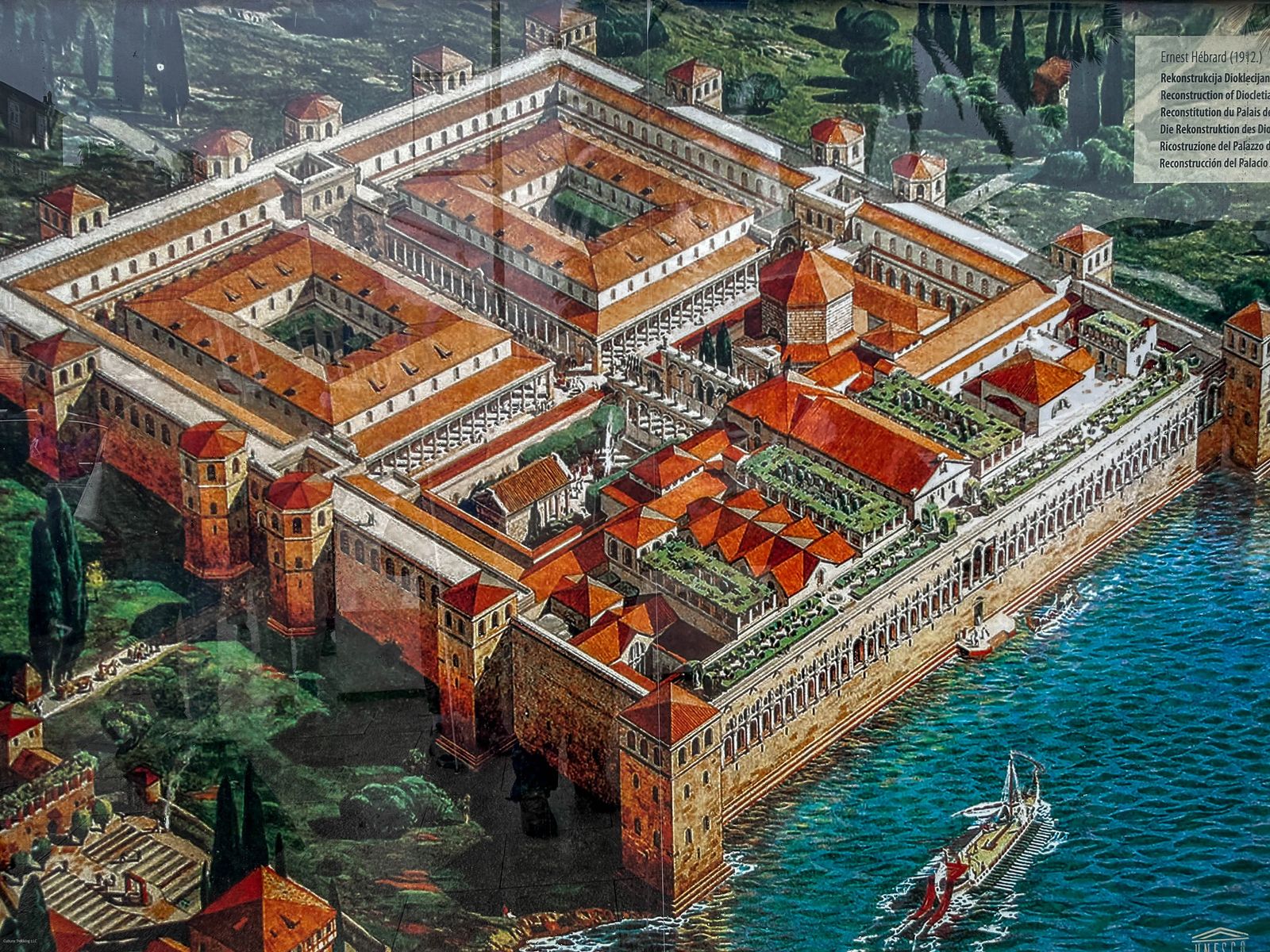
Diocletian’s Palace
Declared a UNESCO World Heritage Site in 1979 Diocletian's Palace is the main draw for those visiting Split today. You could easily spend two or three days in the city exploring everything that the old town has to offer. The entire palace is nearly 400,00 sq ft and is literally right on the edge of the Adriatic sea.
The Old Town, which was once Diocletian's Palace, has walls 7 feet (2m) thick and 72 feet (22m) high on the seaside part of town. There were originally 16 towers along the walls, essentially he built a castle for himself, but only 3 of those towers remain, with 4 major gates into the city remaining as well.
The Palace was built for one man and his entourage, adjustments needed to be made to house a growing population. Can you imagine what the 'broom' closet would look like in this kind of place? Imagine being the person who gets to brag about 'yeah, my apartment was once the broom cupboard for a Roman Emperor back in the day'.
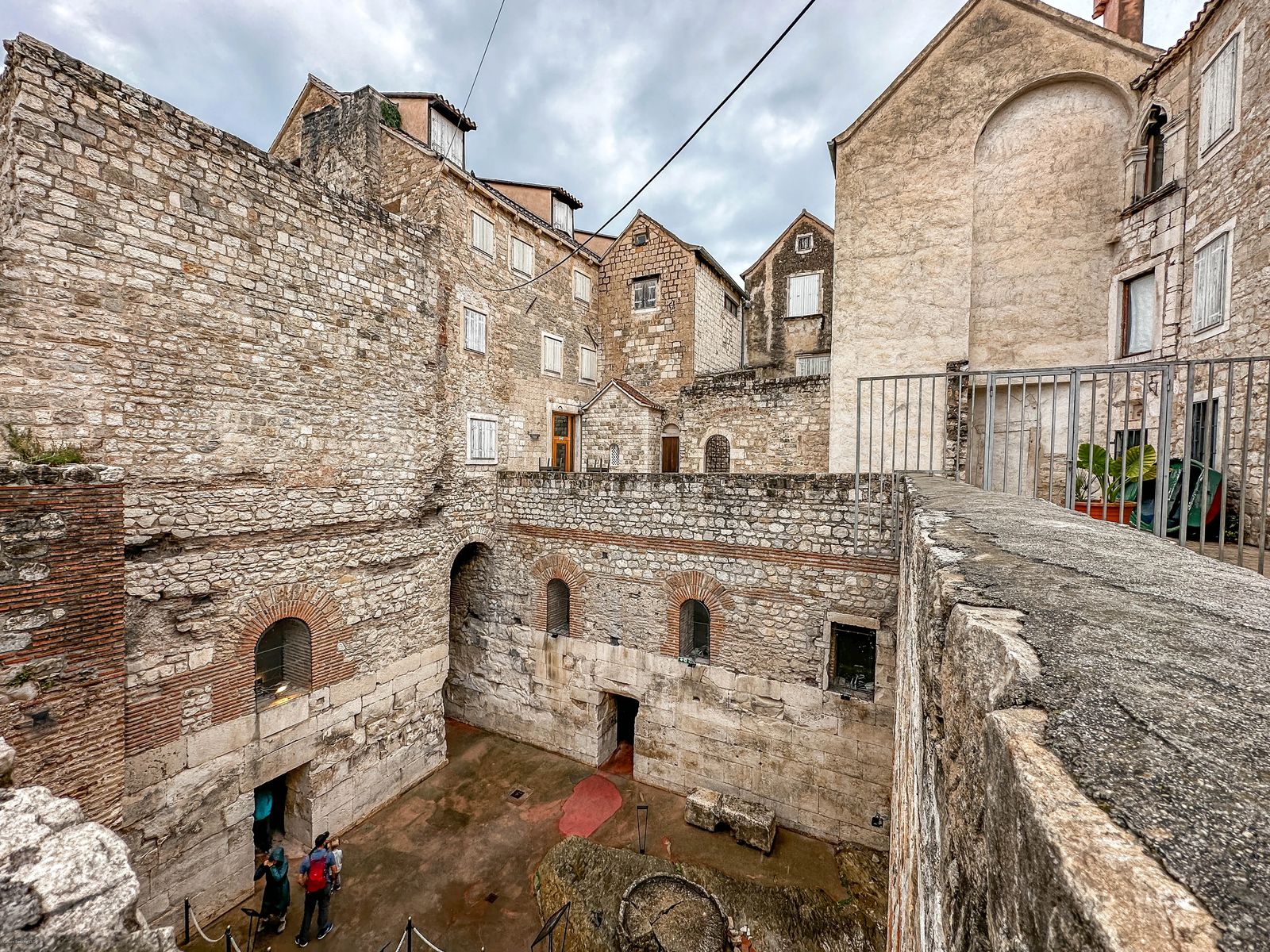
As you walk through the old city you can see how the people have transformed this continuously inhabited space since the Roman times and how the ages of architectural influence have changed it. You can see Medieval, Renaissance, Baroque, and Roman architecture all within one complex. The confluence of architectural styles and the examples of an imperial palace with transitional Byzantine architecture is why this city was named a UNESCO site.
When cruise ships come in, this place gets PACKED so if you are claustrophobic - I would suggest going in the early mornings or late evenings when the cruise ships have departed. You can also take a private walking tour with a local that can bring you through side streets to avoid the worst of the crowds.
The palace itself is free, but there are a few ticketed sights within Diocletian’s Palace that visitors might want to visit – and we are outlining the one’s we recommend.
Diocletian’s Palace like never seen before, Diocletian’s Dream invites guests to view the palace in 3D virtual reality. Participants step into the year 305 AD to witness the palace as it appeared when it was first built.

Split City Museum
Housed in a former residence within the palace, the Split City Museum details the city of Split from its origins until modern times. Situated over multiple floors – starting with information about Diocletian and the building of the palace on the ground floor – the museum offers insight into the lengthy history of Split.
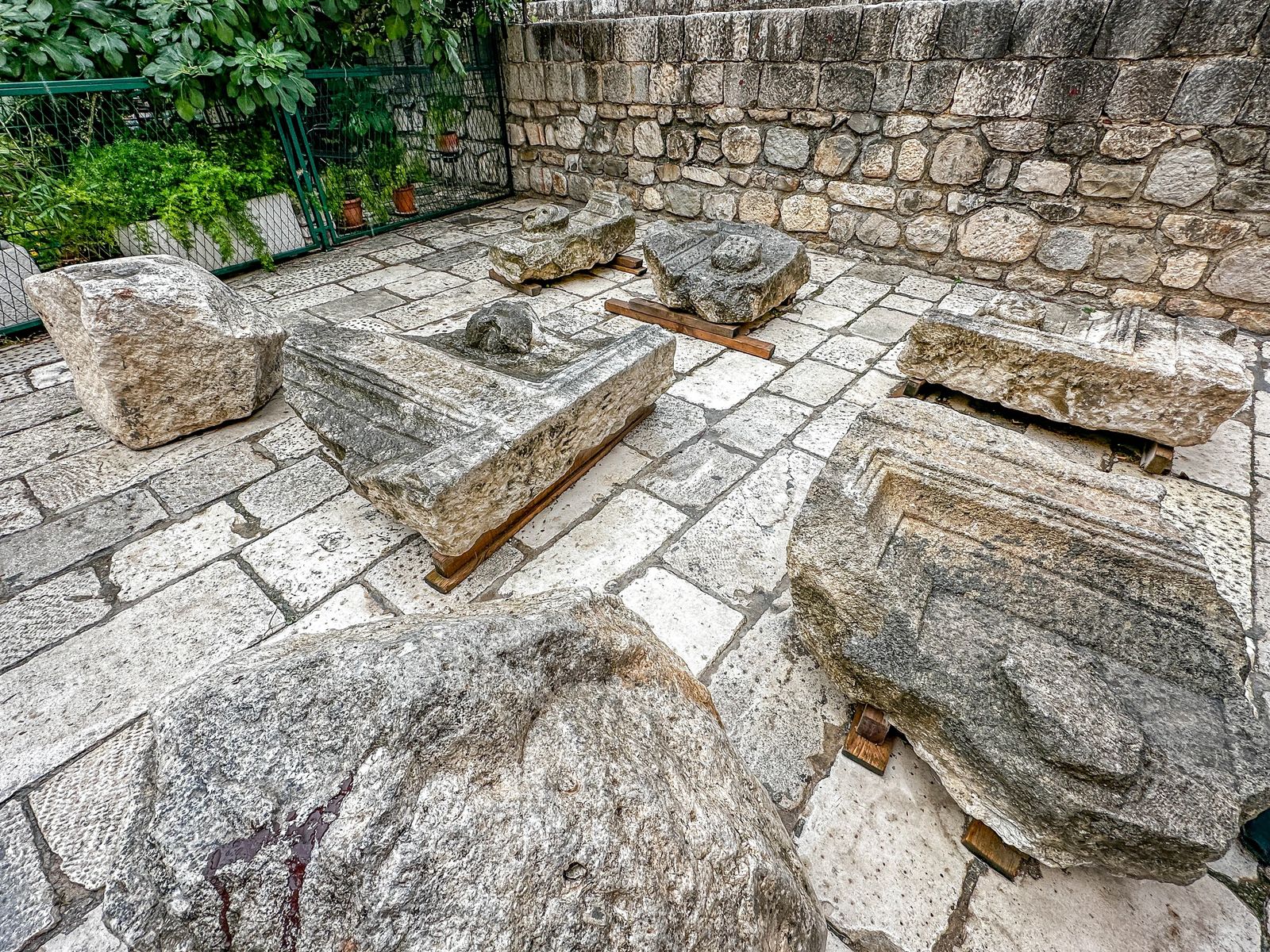
Split Archaeological Museum
The Archaeological Museum in Split located just a short walk north of the Old Town is an interesting place to see ancient artifacts.
The small museum features special indoor exhibits and a permanent outdoor collection of artifacts – such as stone engravings, sculptures, sarcophagi and mosaics. The sphinx sculpture near the entrance dates to 1400 BC.

Portea Aenea (Bronze Gate) on the Southside
This is a rather plain and unassuming gate with no pomp, sculptures, or carvings. While some may assume it is a simple entrance into the city of Split, this was once the escape route for the Emperor into the harbor should the city ever be attacked.

Diocletian Cellars
These Cellars weren't used to house wine per se (although food and wine were stored here), but more built to help even out the upper floors of the Palace (where Diocletian stayed). While much of Diocletian's residential apartments were destroyed when things were being converted to house a broader population, much of the cellars retain the layout of what his quarters would have looked like.
If you notice an odd smell, well....I hate to tell you that when the medieval residents moved into apartments above, this turned into waste and sewage dumping grounds. It has since been cleaned out and sanitized (thankfully). If you walk through the cellars, also see if you can find evidence of where Diocletian's wine was made (look for the wine press), and hear the acoustics that allowed him to be warned of anyone approaching. Diocletian was a paranoid man, he was always nervous he was going to be killed in his sleep. I guess his paranoia paid off though, he was the only Roman Emperor to die of natural causes.
Today if you walk through the open parts of the former cellars, you will find tourist trap gift shops, a labyrinth of wonders, and maybe be able to crash a wedding or festival or two if you are lucky. The cellars are also where you will find the Vestibule that once led to the palace.
To find the cellars, head to the Southern end of the Palace through the Bronze Gate or a door in the Peristyle. There are still archeological digs revealing new findings of the tribes that predated Diocletian by nearly two centuries. There are rumors of the cellars being the place where Diocletian tortured his Christian victims, but it was hard to find hard evidence for this claim.
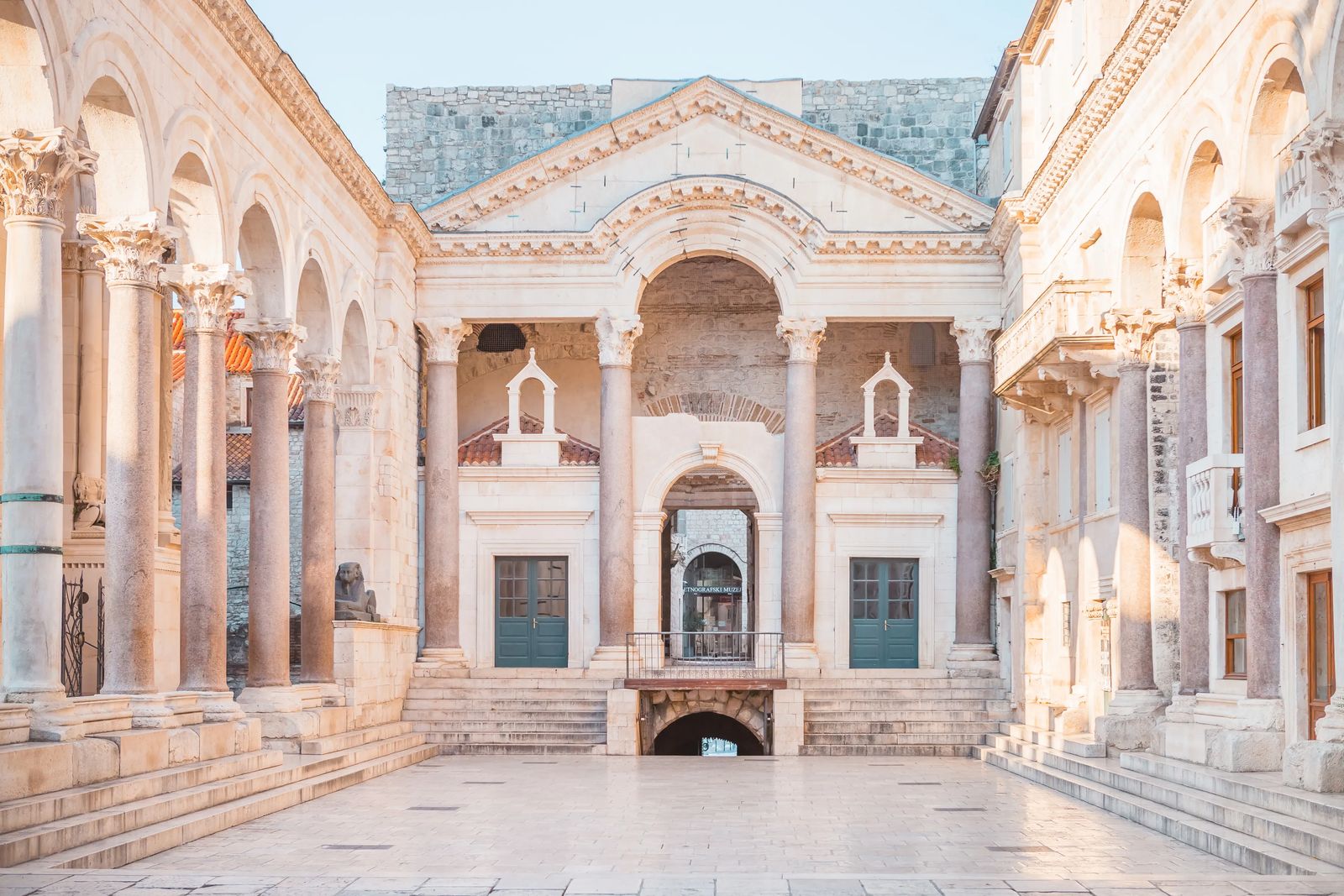
Peristyle Square
The Peristyle is the main square that tourists visit in Split if visiting Diocletian's Palace. It was where you would have been greeted by the Emperor, with giant 73 foot columns of the Mausoleum, statues, spoils of war and a long walkway to his quarters to ensure you knew who was boss. Today you still can get that feeling of being overwhelmed, but it is more from the amount of people there rather than for the Emperor. Make sure to watch out for pickpockets as it does get quite crowded with tourists.
On the East side of the Peristyle is where you find St. Dominus Cathedral (formerly the Mausoleum). On the west side (down a small alleyway) you find the Baptistry (formerly the Temple of Jupiter).
The Temple of Aesculapius (or the God of Medicine) collapsed in the 20th century, but it has since been restored and is worth a look.
Make sure to also note the only intact Sphinx that Diocletian brought from his conquest in Egypt. Made of Black Granite, it was brought back to Split around 297 AD. The sphinx is believed to be from the time of Pharaoh Thutmose III, and is over 3,000 years old. It is said to be the oldest item in Split.

Saint Dominus Cathedral, Treasury and Bell Tower
In the heart of Diocletian Palace, you will find this unassuming church called the Cathedral of Saint Dominus. It was originally built for Diocletian's burial place or mausoleum and later turned into the church.
As you enter notice the massive stone blocks rising up from the ground towering 73 ft (24m) above you, with 9ft (3m) thick walls. The granite that makes up the columns is said to have been brought all the way from Egypt. Make sure to look for the viewing window into the lower part of the floor where you can see the original mosaic of the mausoleum.
In a fitting middle finger move to Diocletian, the Christian martyrs who died under Diocletian's rule were buried here as well. The sarcophagus that once held Diocletian's remains and the Pagan statues that once adorned the walls have never been found. Although, with the way he killed some of them (think tying them to millstones and dumping them in the harbor) I doubt they treated his remains with any kind of respect.
As you enter through the walnut-carved door (1214) with 12 panels all representing parts of Christ's life. Immediately to your left, you have the Romanesque pulpit made from marble and the symbol of St John on the top.
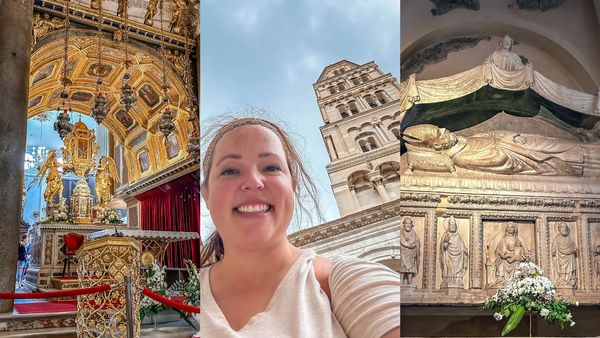.jpg?fit=outside&w=1600&h=900)
To the right of it, is a small niche with St Dominus, the Patron saint of Split. The altar to the saint is a Gothic style from 1427 and shows the saint in peaceful eternal sleep.
To see the original floor mosaic, look for the altar of St Arnir, the viewing window for that flooring is right in front of it. Over the main altar, you will see paintings by Pietro Ferrari, that depict the life of St Dominus.
If you go upstairs, there you will find the treasury with religious items dating from the 7th century. Just behind the church is where you find the Romanesque-Gothic style bell tower that took 300 years to complete. The bell tower is 187ft (57m) tall, but if you want to get to the top of it, you have to climb up all those stairs - the payoff? Stunning views of Split.
In the crypts, you find the Patron saint of the Blind, St Lucia of Syracuse. She had her eyes gouged out before being martyred under the Christen purge of Diocletian.
As you leave, you walk a short distance to the Baptistry, you will find a unique spectacle. While it is technically a Baptistery for St John, it was once the Temple of Jupiter. If you look closely at the baptismal font, you can still see both Pagan and Christian symbols.
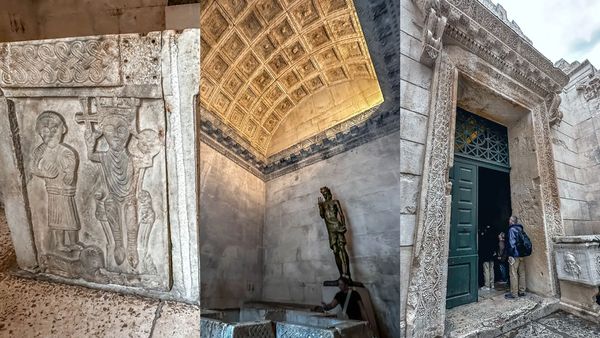.jpg?fit=outside&w=1600&h=900)
Jupiter Temple and Baptistery
The Temple of Jupiter is another Diocletian Palace highlight. It was converted to a church in the 6th century and now houses a baptistery. Tickets are available in the peristyle and can be combined with the cathedral tickets.
This area can get quite crowded as well, and the inside is small for more than about 10-15 people. Once you are inside on the front of the baptismal font you can see the Bishop of Croatia depicted on the left, the King of Croatia on the right, and the citizen underneath the Bishops feet.
While this can be construed as slightly offensive to modern minds, remember many people were illiterate and pictures and paintings were used to convey messages. In this depiction is suggests citizens submit themselves to God, King, and the Church.
You can still see both Pagan and Christian symbols on the baptistry, which makes it very unique. Behind the Baptistry, you will see a statue of St John the Baptist. At first I thought it was a statue of Jesus Christ, turns out I was wrong, lol. The statue was sculpted by Ivan Meštrović, who also sculpted the statue of Gregory of Nin (see below).
The rare preserved Roman barrel vault ceiling still shows relief carvings of faces and flowers. Outside the Baptistry you can see God and heroes like Victoria, Triton, Helios, Hercules, Jupiter and Apollo. The sarcophagus in front of the baptistry is that of Jakov Selembrije (no idea who he is and neither does Google).
One of the twelve sphinxes that Diocletian brought from Egypt is also outside the Baptistry, but as compared to the one in the Peristyle, this one is headless unfortunately.
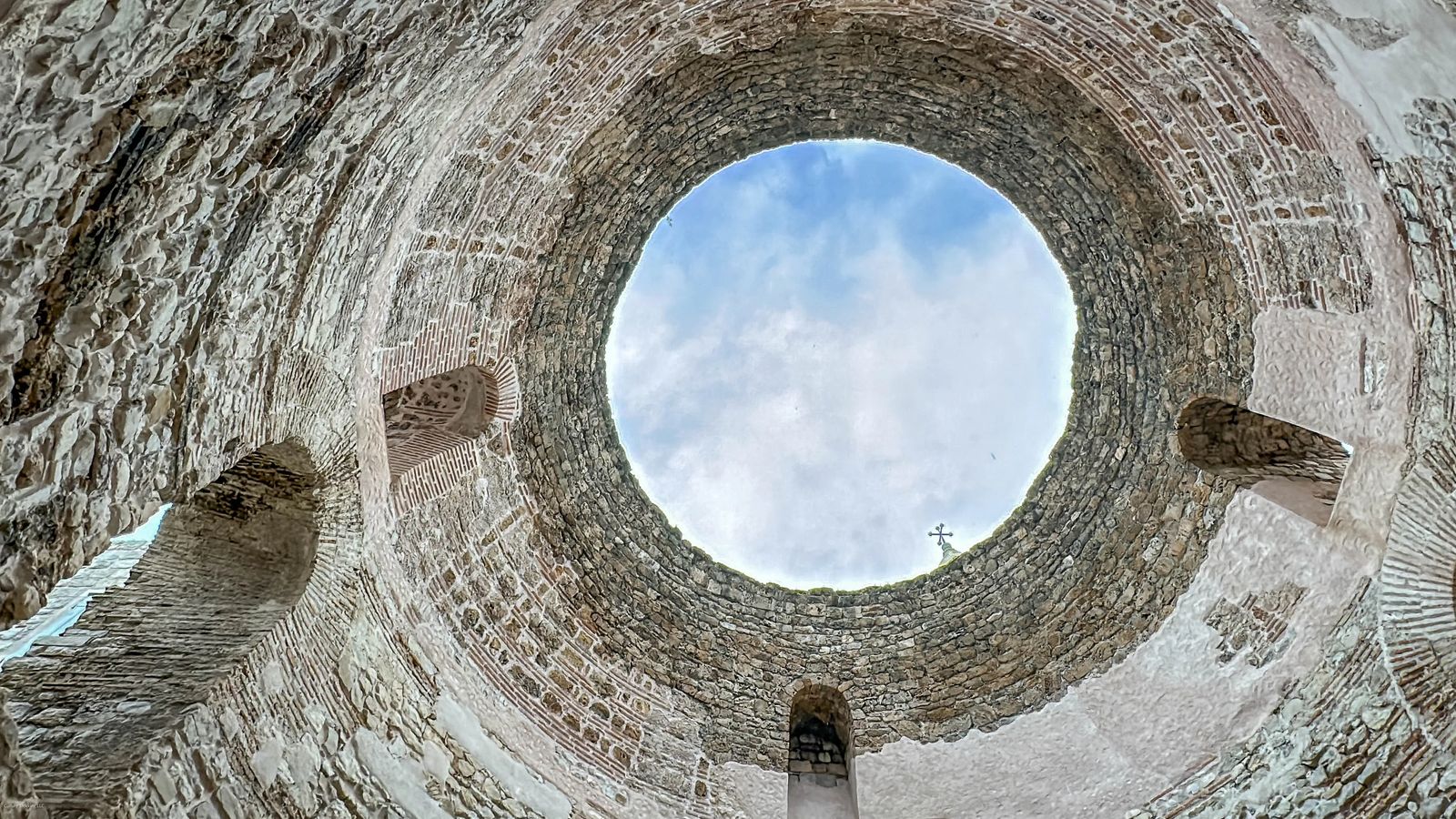
Vestibule
The Vestibule was the first section of the entrance to Diocletian's chambers and the Peristyle. It was also used as a meeting hall, and once had a a dome 55 feet (17 m) high. The opening in the top of the dome had blue glittering mosaics, the walls were grey, and the floor a tiled black and white - and was supposed to represent heave and earth.
Today you can find Acapella singers or Klapa groups, that perform folk songs, and the acoustics are UNREAL in here. The singers are VERY good and is certainly worth dedicated at least 15 minutes to a mini concert here while touring Split.
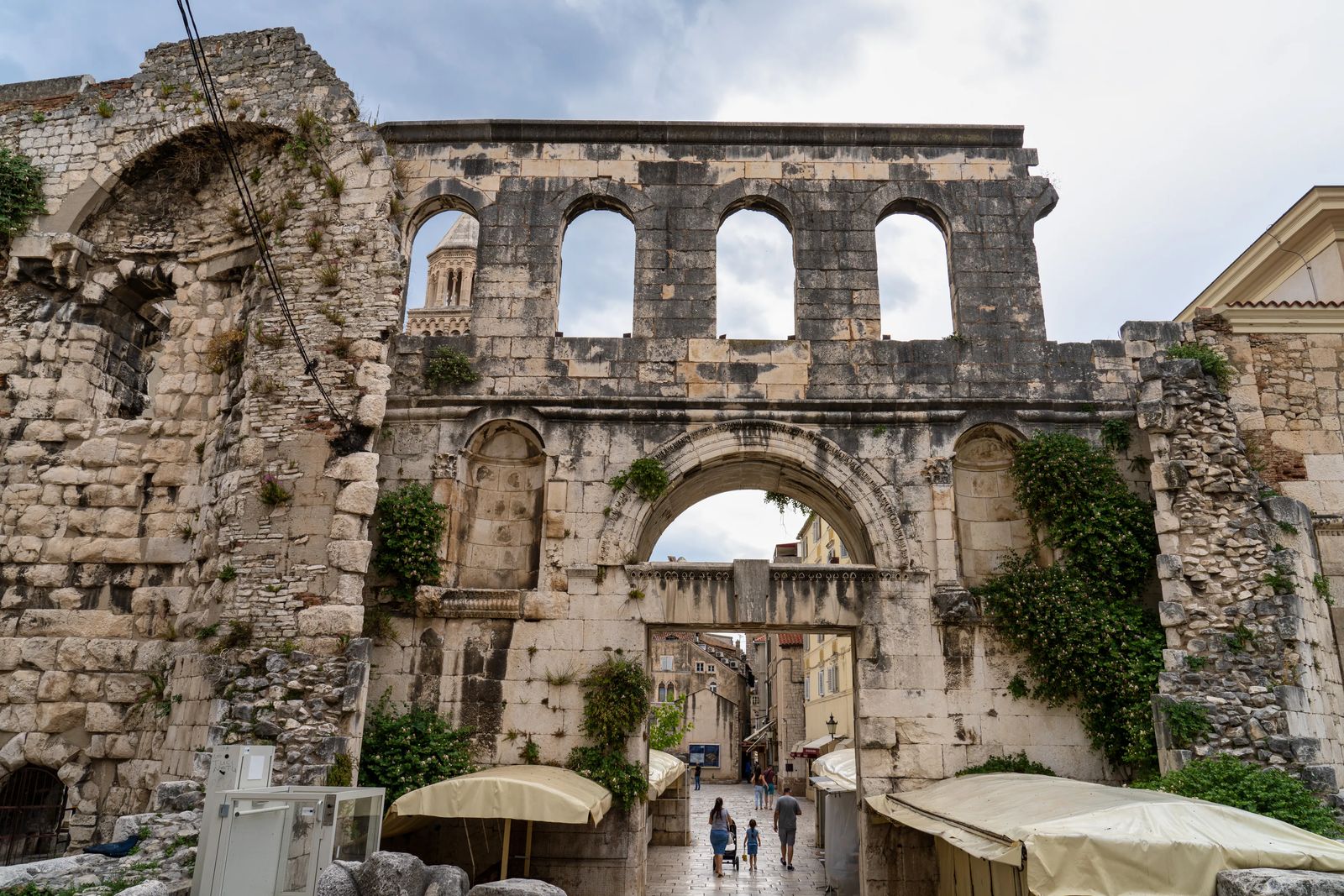
Porta Argentea (Silver Gate) on the East side
As with the other gates, this gate had a small church built over it for St Apolinar. It has been damaged in wars, restored, renovated, and enlarged. You will find the Archeological museum in one of the former gate renovation openings, as well as the Dominican Monastery nearby.
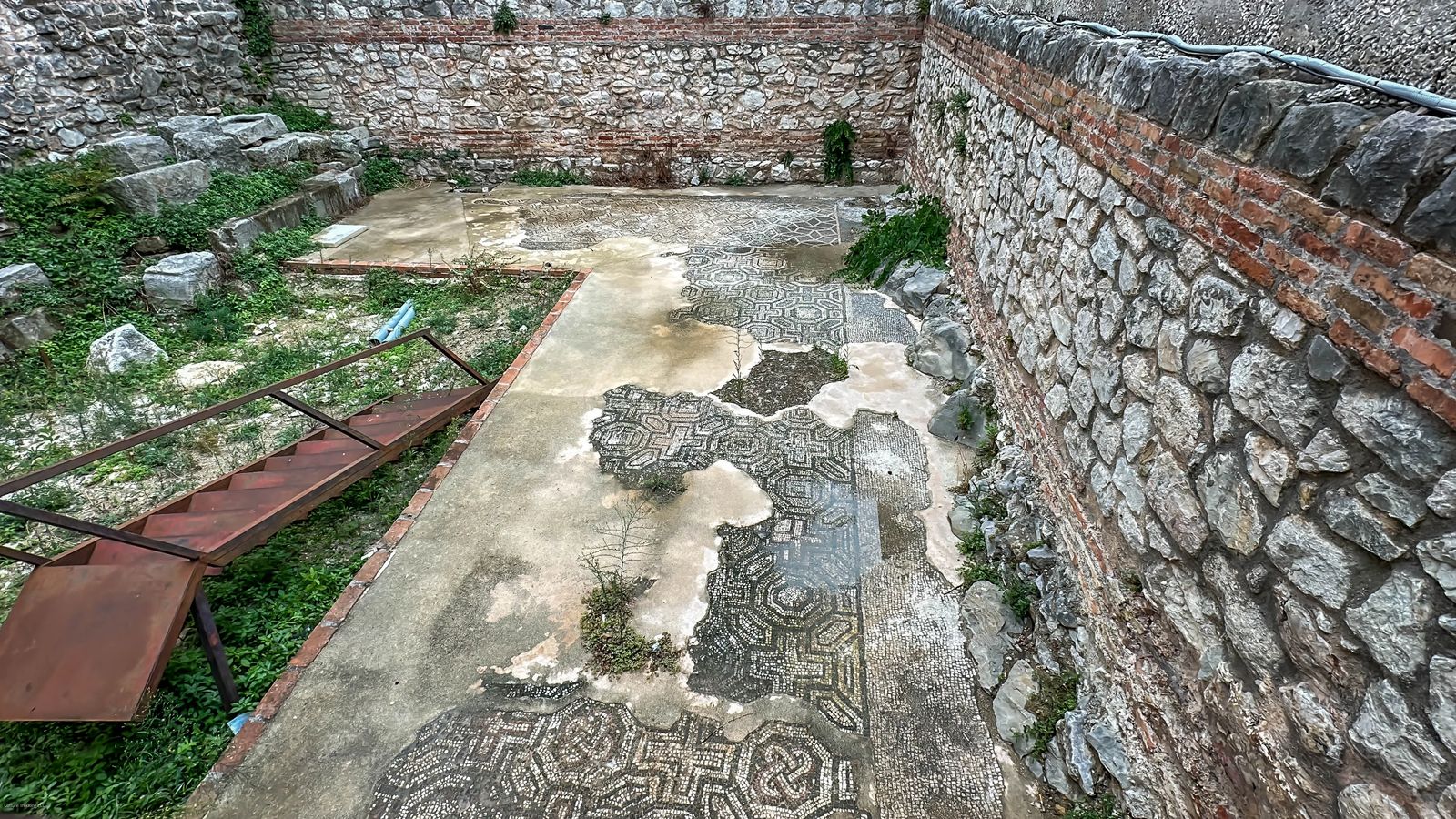
Porta Ferrea (Iron Gate) on the West Side
This is where you will find the Renaissance clock just beyond this gate. There used to be a statue of the Goddess of Victory, but it was replaced by the Christians with a cross in the 5th century. As the city changed, so too did the churches, entrances, and which gods (or goddesses) were worshiped. The clock is really the jewel of this area (even more than the gate), it is a great meeting point for tourists, and if you look closely has 24 digits instead of 12.
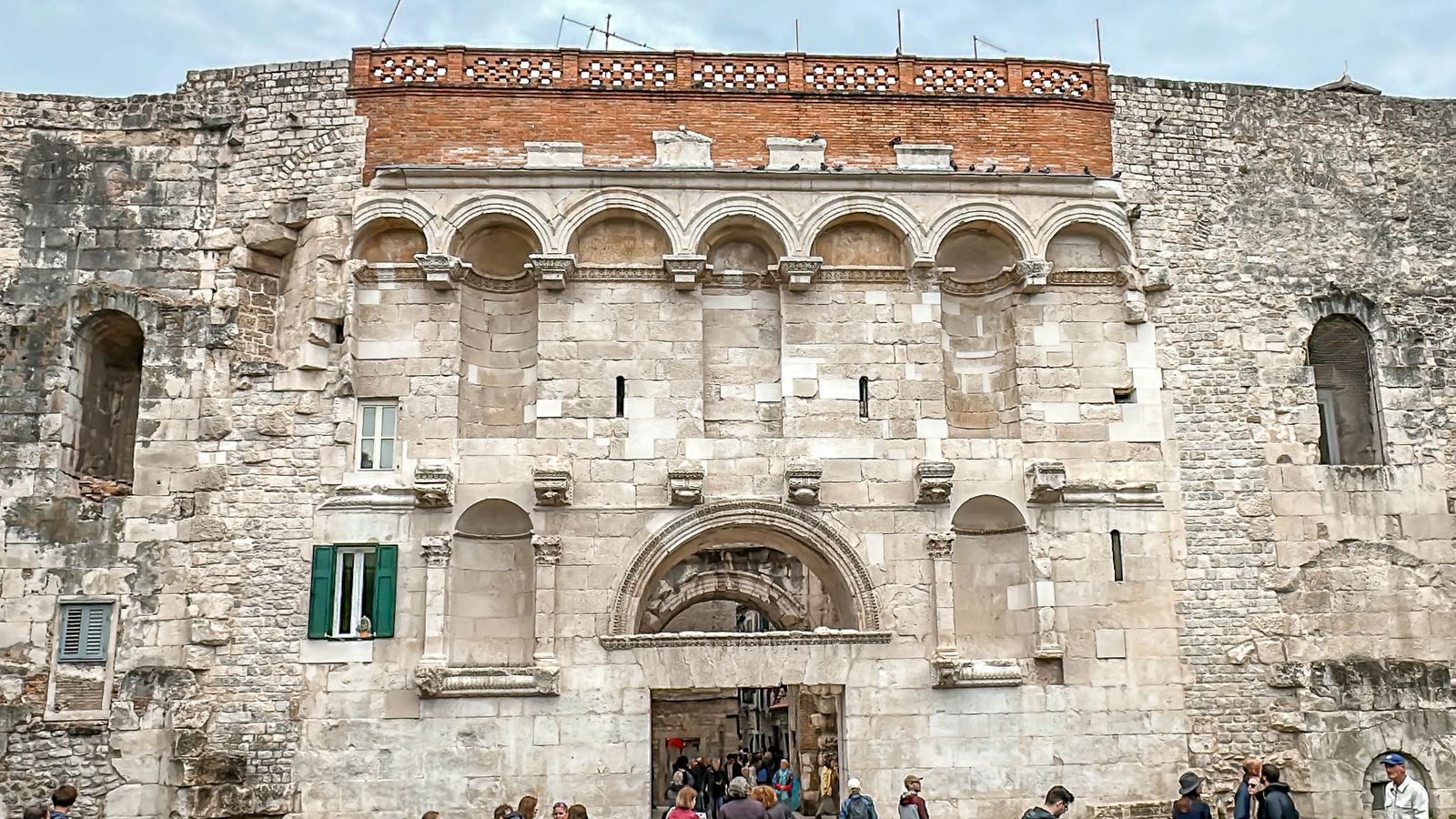
Porta Aurea (Golden Gate) on the Northern Side
Emperor Diocletian walked through these gates on his way to his palace. On the facade, you will find four sculptures of Diocletian, Maximian, Galerius, and Constantius Chlorus. The street that leads through this gate will lead you to the Peristyle and Cardo street.
As you walk down the street you will run straight into the statue of Gregory of Nin. Gregory was a bishop who defied the Pope by teaching the bible in the Croatian language and not just in the prescribed Latin language. Thus because of him, the Croatian language was introduced into the teachings, allowing more citizens to understand the Christian theology. The statue is 28ft (8.5m) tall and it is said that if you rub his big toe, you can have good luck.
Go to the Split City Museum, and arrange to take a tour to the top of Golden Gate to walk along the northern wall. You are greeted with a GREAT vantage point of Diocletian’s Palace and the Split Old Town.
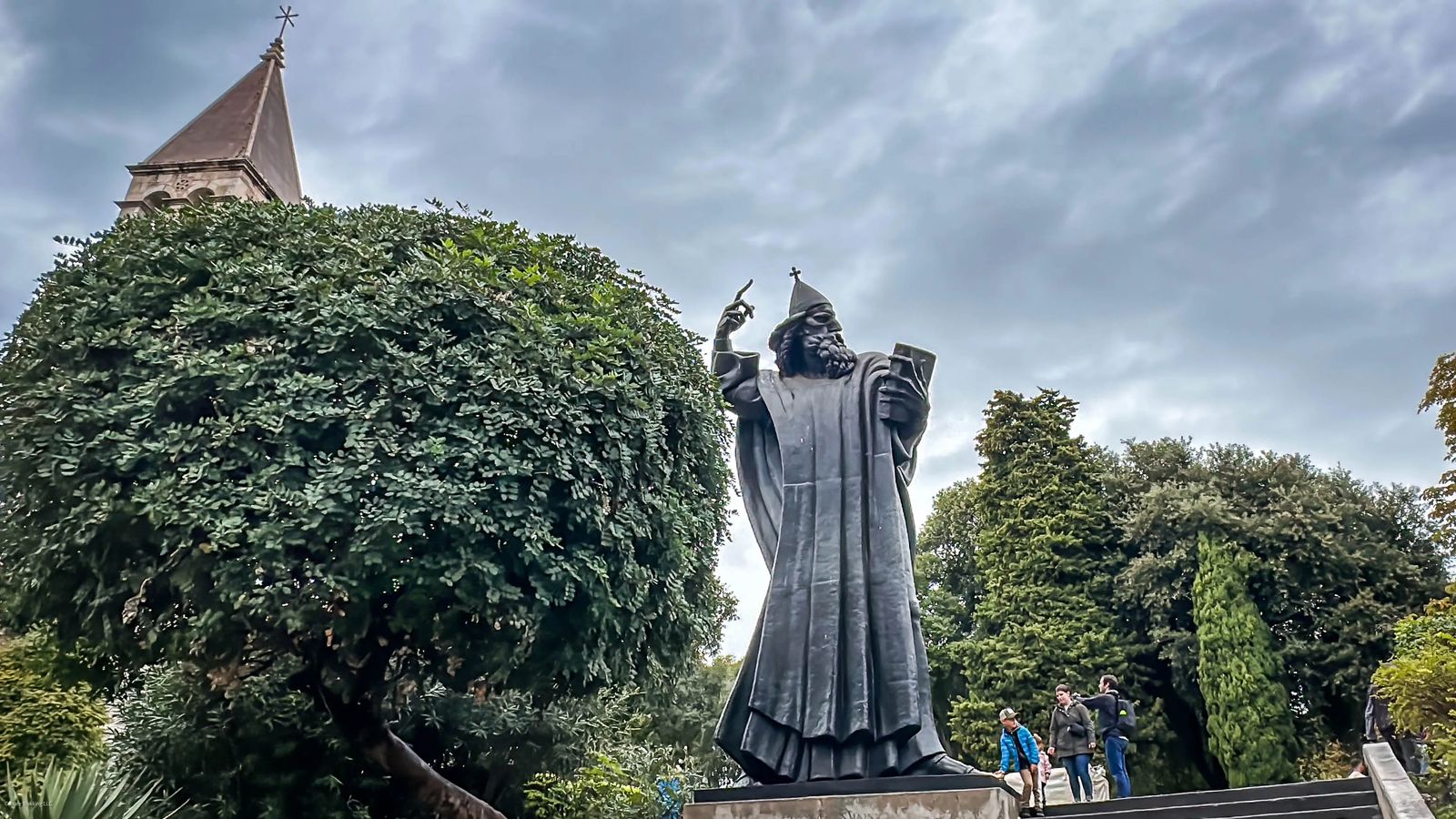
Grgur Ninski
A 28-foot-tall statue of Grgur Ninski stands just outside the Golden Gate (north gate) of Diocletian’s Palace – and it’s a Split must see sight!
Grgur Ninski – or Gregory of Nin – was a famous Croatian bishop of the 10th century. He fought to have mass spoken in Croatian – rather than Latin – which greatly impacted the Croatian culture and language
Often called The Wizard, the statue was created by local artist Ivan Mestrovic in 1929. When the statue was first unveiled, it stood in the Peristyle. Rubbing Grgur Ninski’s big toe is said to bring good luck; in fact, so many people have rubbed Grgur Ninski’s toe that it now is shiny and bright!
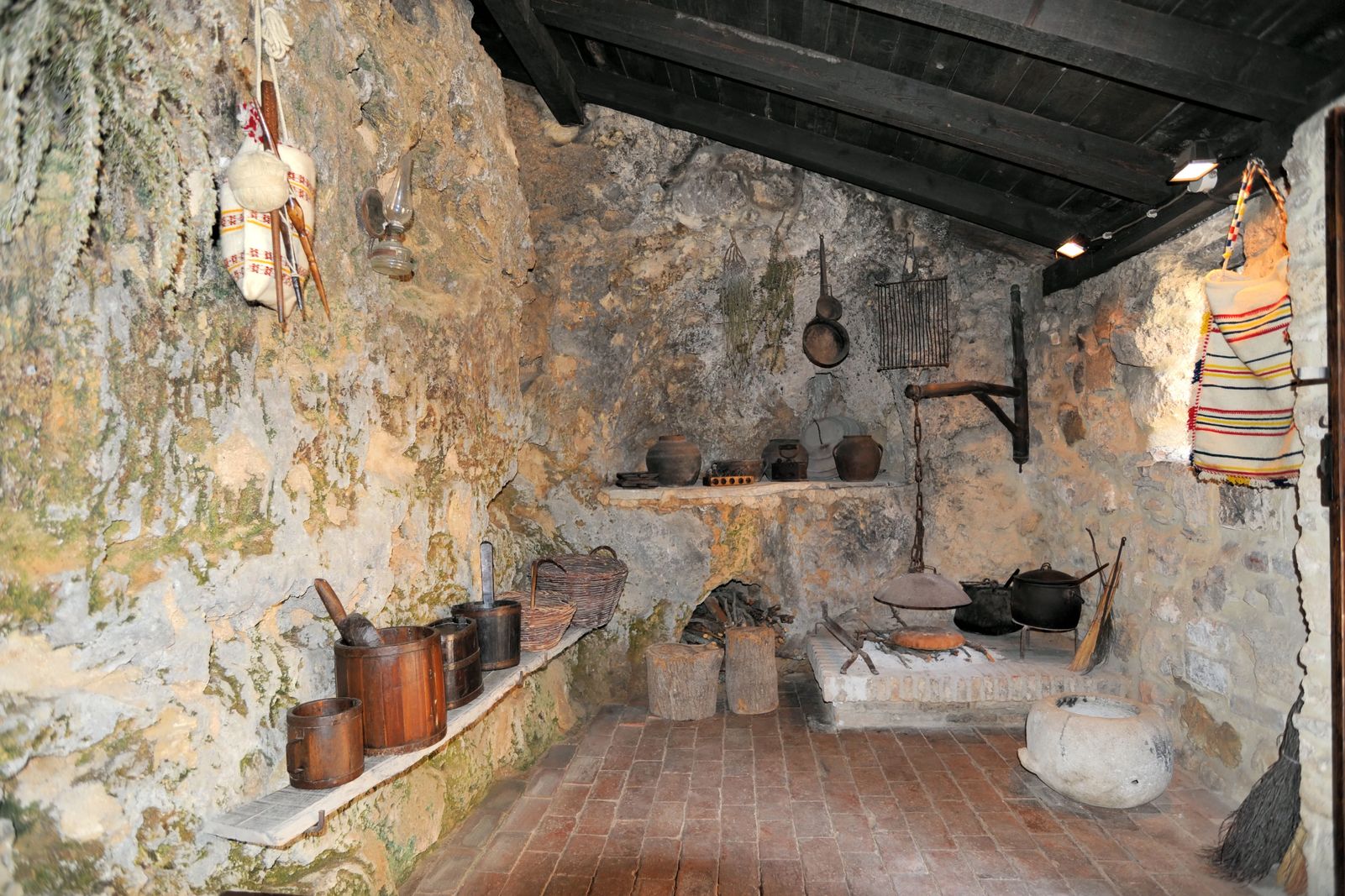
Ethnographic Museum
Inside the Split Ethnographic Museum you will find many different traditional clothes of Dalmatia throughout the years. See Art, furniture, textiles, carpets, jewelry, weapons, traditional handicrafts and more. If you don't have time to visit in person, they also have a virtual tour available here.
Much of what you see in the Museum is thanks to a nobleman of Zadar (the former country here) who collected many of the items and started to display them privately in 1907.
It costs about 3 Euro to get in, but add the Vestibule tour where you can climb to an elevated spot on the Vestibule for great vantage points of the city.

People's Square
Welcome to the 15th-16th century with the brightly colored houses the form people's square and a very European feel to the city of Split. This square is thanks to the Austrians who captured the city and continued to develop it. It is lined with bistros, restaurants, and shops. I found this area to be much more open, less claustrophobic, and a GREAT place to do a bit of people watching.
You pass through the Iron Gate (on the West side of the former Palace) to get into the square. This is also where you can get a great photo with the clocktower from a distance to get the entire tower.
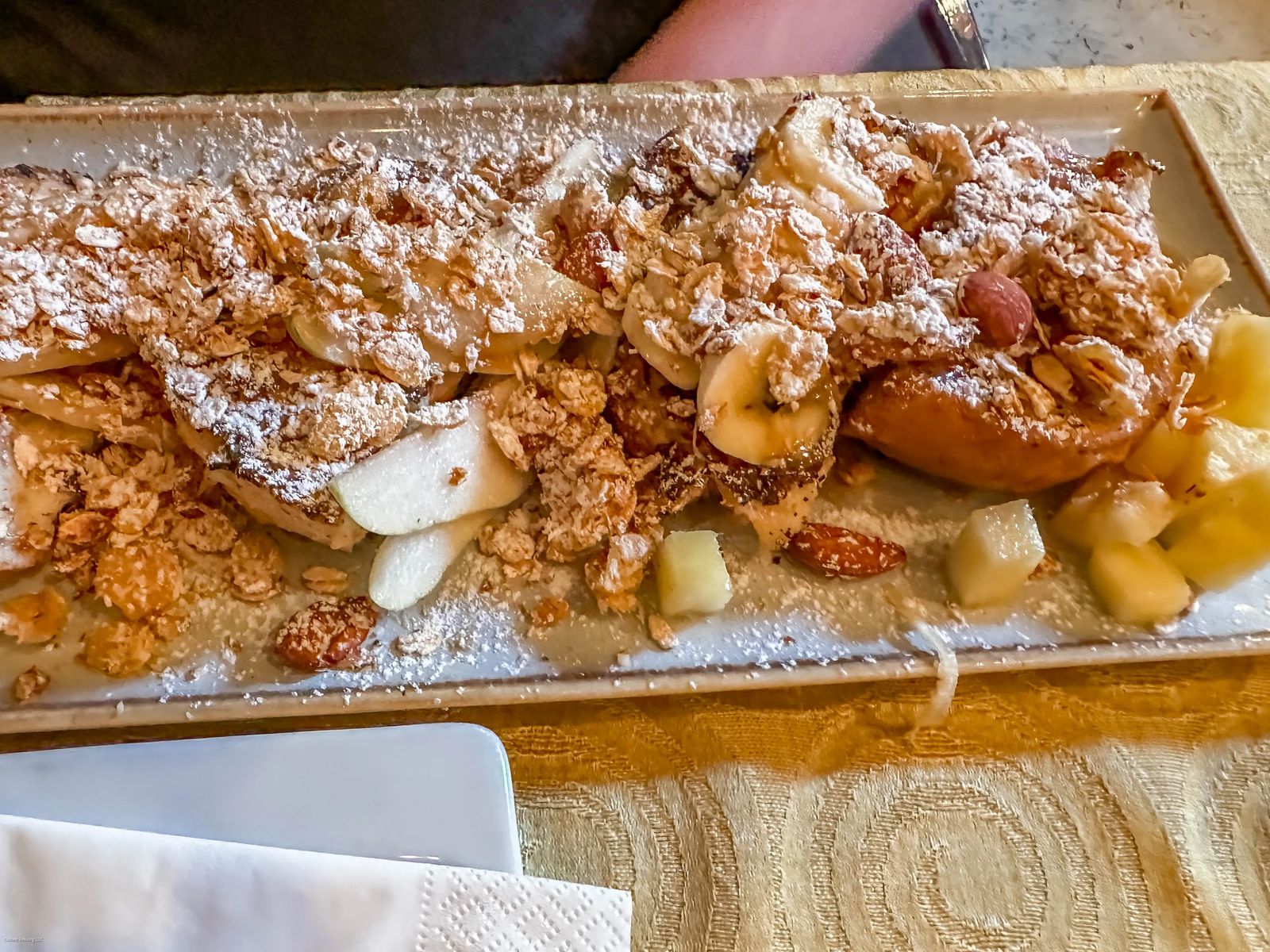
Marmont Shopping Street
Marmont was an architect that helped tremendously to modernize split to what we know today. So the major street was named after him. The first cinema of split was found here, there is a fish market, a spa, a popular photo gallery. It is a shopping and foodie oasis and is a great place to get souvenirs and unique clothing.
My friend and I actually skipped the shopping and headed over to Fig restaurant for some delicious breakfast. Our guide also said D16 Coffee is the best in Split, if you don't want a full meal. Keep in mind that shops and restaurants in Croatia, and especially Split serve breakfast until around 1pm and open around 10 or 11 am.

Prokurative Square
This is on the west end of the waterfront Riva, the beautiful neo-Renaissance buildings surround this square filled with restaurants. It is a little difficult to find your way here from the center of the city as it is only open on the south side. I was incredibly grateful we had a local guide to get us here, and through the city or I would have been hopelessly lost.
The Venetian architect who designed this was very homesick and tried to recreate a small part of his home in Split. This square is where you will often find tourists getting photos, and in the summer this is where the Split Music Festival is held.
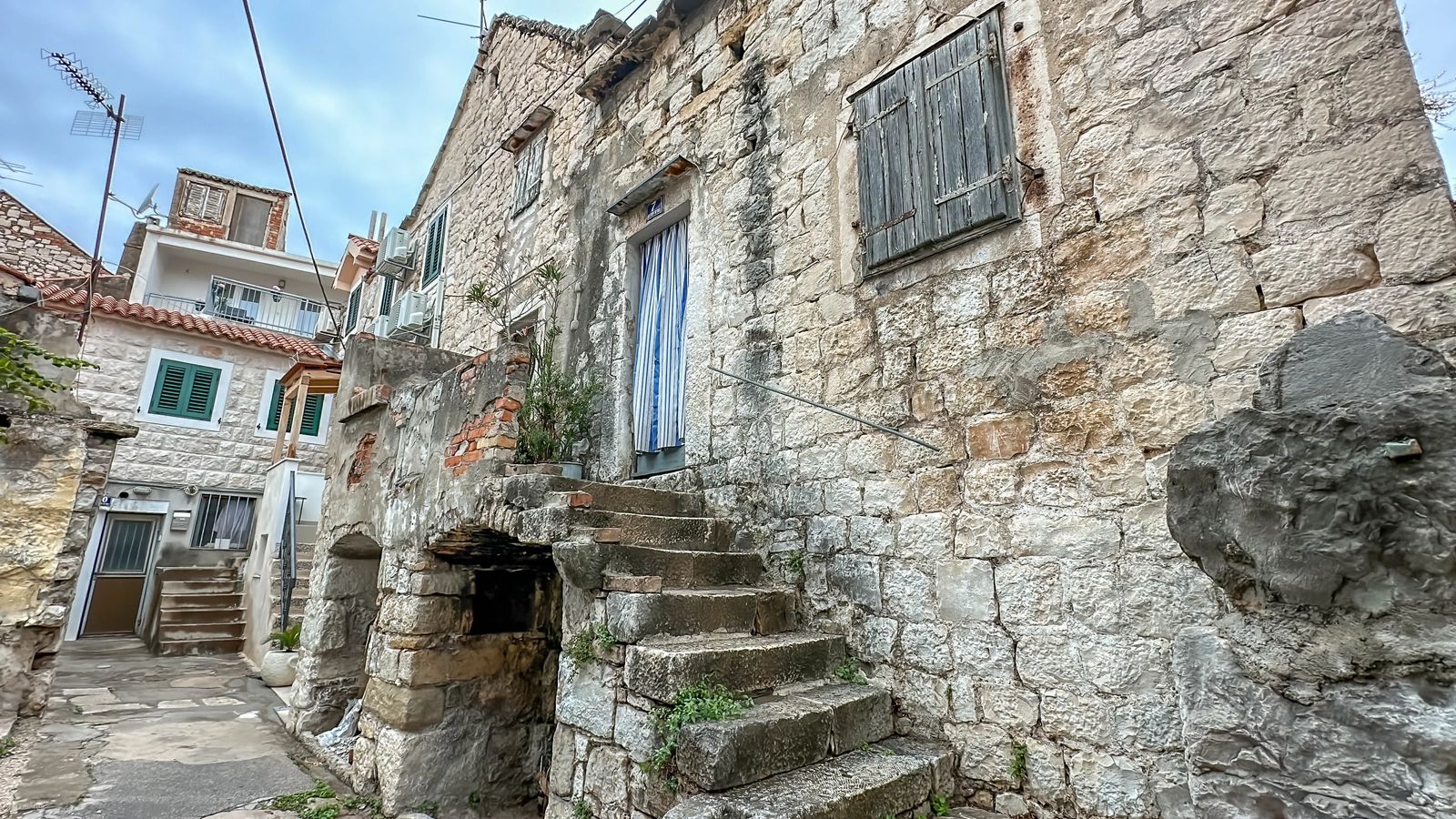
Other Things To See In Split
If you wanted to bag the city tour and get out in nature, the popular tour (with hundreds of boats offering quick tours to it) is the Blue Cave. Walk along the Riva, and see which boat tour fits your fancy - the tours aren't too expensive ranging anywhere from 35 euros to 55 euros depending on what you want included in the tour.
Our guide took us to a few other spots in the city to show us how houses in the 15th century used to be built. The kitchen was situated up top so that if a fire broke out it was easier to contain and less costly for them to repair the whole house. The animals were kept under the stairs, and each staircase had a hole in it to tie up their Donkey. Apparently everyone in the city had a donkey, and if you visited your neighbor - it would be like offering a parking spot for their transportation.

My Takeaway Of Touring Split In Five Hours
I'm not a huge fan of large crowds, or shoulder to shoulder touring with others if I'm honest. Inside Diocletian's Palace felt like this, especially when you are in the Cellars as this has become a shopping space. If I was to do this again, I would tour the city as early as I could, before the cruise crowds. Then take advantage of the shopping along the alleys and squares and have a early afternoon boat ride along the coast. If the weather is too hot to walk around town, or it is raining buckets, then head into some of the museums and virtual experiences I mentioned.
I think Split is certainly worth visiting, but the crowds are a bit much for me personally. The mix of Roman and Modern is so fascinating though, I don't think I would skip Split - a day tour from Dubrovnik to Split was the perfect amount of time for me personally in this bustling city.
Let me know if you found this article helpful in the comments below, or if you would add anything to the suggested itinerary.
Guided Tours of Split
Like it? Pin it for later! Sharing is caring ;)
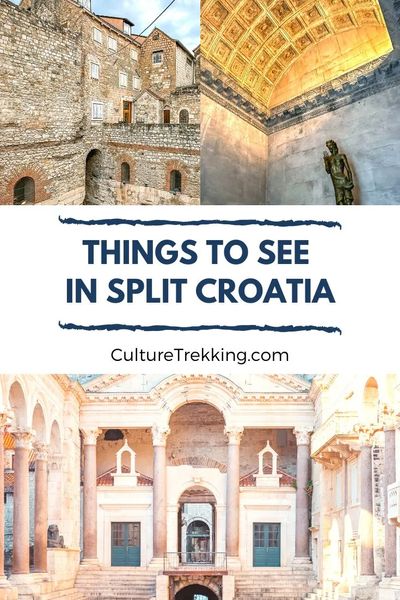.jpg?fit=outside&w=1600&h=2399)
.jpg?fit=outside&w=1600&h=2399)
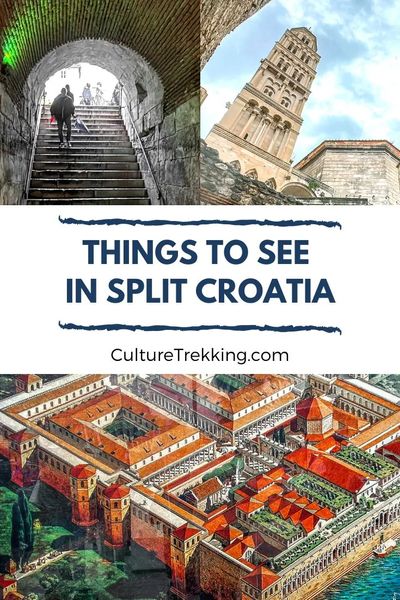.jpg?fit=outside&w=1600&h=2399)
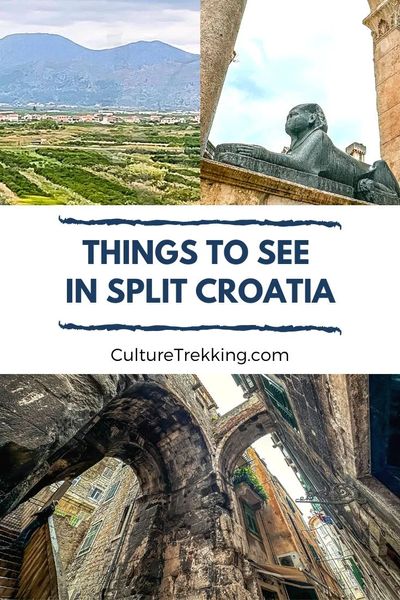.jpg?fit=outside&w=1600&h=2399)
Where to stay in Split
Latest Articles On Culture Trekking


Welcome to Culture Trekking!
My name is Janiel, a leader in the travel industry with over 20+ years of experience with international travel. I specialize in solo female travel, cultural connections, sustainable adventures, food and history to help make your travel experiences fun, meaningful, and delicious. My experience in travel, and my personal story have allowed me to get published in Fodor's Travel, Atlas Obscura, Metro.co.uk, Trip Advisor, and multiple Podcast interviews. You can find me on pretty much every social media channel YouTube, Instagram, Twitter, Facebook, Pinterest, TikTok. To read more about me and my story click here. If you are a brand and would like to work with me, click here.

















